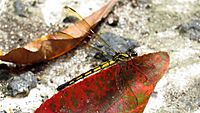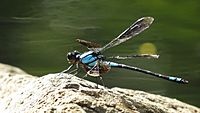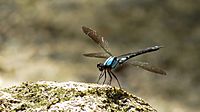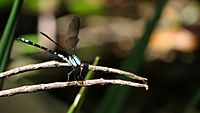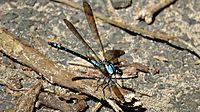Sapphire rockmaster facts for kids
Quick facts for kids Sapphire rockmaster |
|
|---|---|
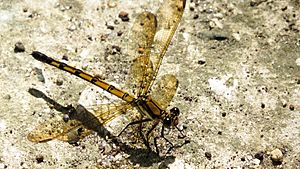 |
|
| Female | |
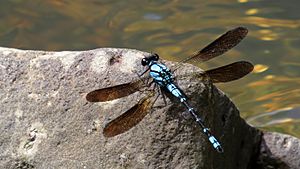 |
|
| Male | |
| Conservation status | |
| Scientific classification | |
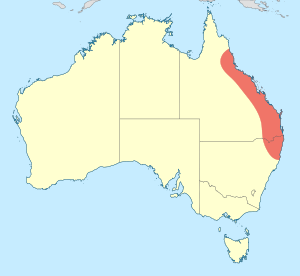 |
The sapphire rockmaster (scientific name: Diphlebia coerulescens) is a cool type of damselfly found in Australia. It's known for its wide wings and bright colors. This damselfly lives in places like Queensland and north-eastern New South Wales. You can often spot them near fast-moving streams and rivers. They belong to a group called the azure damselflies.
Contents
Discovering the Sapphire Rockmaster
An entomologist (a scientist who studies insects) named Robin Tillyard first described the sapphire rockmaster in 1913. At first, he thought it was just a type of another damselfly, the tropical rockmaster.
However, he later realized it was a completely separate species! He noticed that the male sapphire rockmaster had a different shape on its tail part. There were also clear differences in their size and colors.
What Does the Sapphire Rockmaster Look Like?
Male Sapphire Rockmaster
Male sapphire rockmasters are very striking. They have a body that is mostly bright blue and black. Their wings are a dark, smoky brown color.
You can tell them apart from the tropical rockmaster by looking at their blue markings. They have two large blue spots near the front and underside of their body segments (called terga) from numbers 4 to 6. The top part of their black body often has blue marks at the front of these segments too.
Their wings are not as wide as the tropical rockmaster's wings. However, they are wider than the wings of other damselflies in the same group. Their legs are mostly brownish-black. But they do have some blue on the upper parts of their middle and back legs.
Female Sapphire Rockmaster
Female sapphire rockmasters have a different look. They are mainly brown and olive-green. Their wings are also a smoky color, just like the males.
Their legs are dark brown. The upper parts of their middle and back legs are light brown. The top of their body is a dark olive-green. There is a darker line running down the middle of their back. This line gets wider into a triangle shape at the back of each body segment.
Gallery



